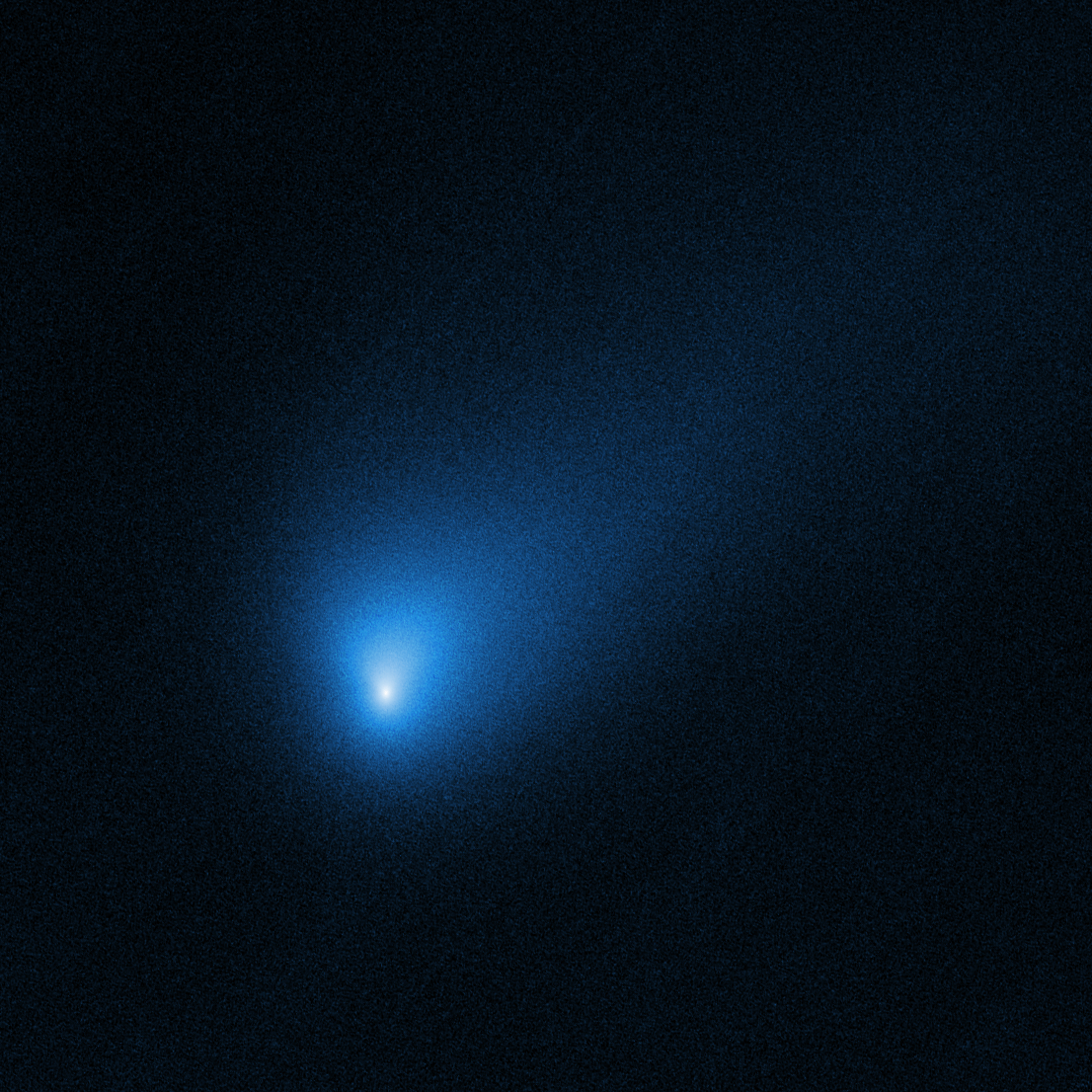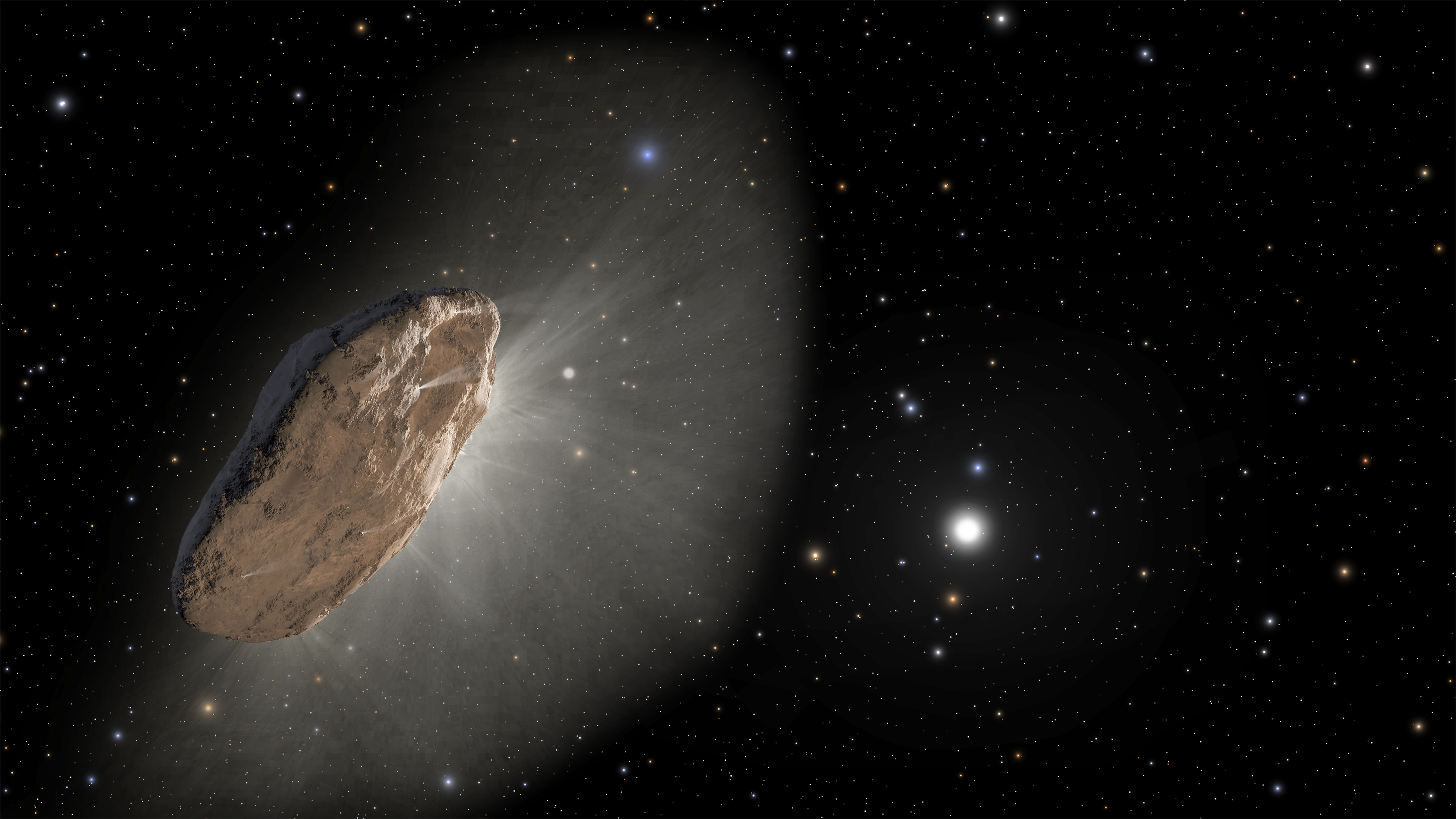1 min read
Interstellar Comet 2I/Borisov (Hubble)

This Hubble Space Telescope image of 2I/Borisov shows the first observed rogue comet, a comet from interstellar space that is not gravitationally bound to a star. It was discovered in 2019 and is the second identified interstellar interloper, after 'Oumuamua. 2I/Borisov looks a lot like the traditional comets found inside our solar system, which sublimate ices and cast off dust as they are warmed by the Sun. The wandering comet provided invaluable clues to the chemical composition, structure, and dust characteristics of planetary building blocks presumably forged in an alien star system. It’s rapidly moving away from our Sun and will eventually head back into interstellar space, never to return.
About the Object
- DistanceDistanceThe physical distance from Earth to the astronomical object. Distances within our solar system are usually measured in Astronomical Units (AU). Distances between stars are usually measured in light-years. Interstellar distances can also be measured in parsecs.At the time of observations, the comet was 2.782 au from Earth (about 260 million miles).
About the Data
- Data DescriptionData DescriptionProposal: A description of the observations, their scientific justification, and the links to the data available in the science archive.
Science Team: The astronomers who planned the observations and analyzed the data. "PI" refers to the Principal Investigator.The HST observations include those from program 16009 (D. Jewitt)
- InstrumentInstrumentThe science instrument used to produce the data.WFC3/UVIS
- Exposure DatesExposure DatesThe date(s) that the telescope made its observations and the total exposure time.12 Oct 2019
- FiltersFiltersThe camera filters that were used in the science observations.F350LP
- Object NameObject NameA name or catalog number that astronomers use to identify an astronomical object.Comet 2I/Borisov
- Object DescriptionObject DescriptionThe type of astronomical object.Interstellar comet
- Release DateFebruary 16, 2022
- Science ReleaseStudying the Next Interstellar Interloper with Webb
- CreditImage: NASA, ESA, David Jewitt (UCLA); Image Processing: Joseph DePasquale (STScI)

These images are a composite of separate exposures acquired by the WFC3 instrument on the Hubble Space Telescope. The color results from assigning the color blue to a monochromatic (grayscale) image.

Related Images & Videos

1I/'Oumuamua (Illustration)
This artist’s illustration shows the first identified interstellar visitor, 1I/'Oumuamua, discovered in 2017. The wayward object swung within 24 million miles of the Sun before racing out of the solar system. 'Oumuamua still defies any simple categorization. It did not behave...
Share
Details
Laura Betz
NASA’s Goddard Space Flight Center
Greenbelt, Maryland
laura.e.betz@nasa.gov
NASA, ESA, David Jewitt (UCLA)
Joseph DePasquale (STScI)






























